Tomatoes are popular for home gardens due to their juicy flesh, vibrancy, and many health benefits.
Whether you are an avid gardener or simply appreciate the joys of homegrown seed planting, growing tomatoes always offer a rewarding and fulfilling experience.
However, you must first understand the various growth stages of your tomato plants to successfully nurture them and maximize their yield.
So, here we will explore the life cycle of tomato plants, from germinating to ripening, we’ll look at the importance of growing tomatoes and provide an overview of the various tomato growth stages and their significance.
Keep reading for all the details!

Tomato Plant Growth Stages!
If you want to enjoy the mesmerizing look of fully ripe tomatoes in your garden, understanding the different tomato growth stages is vital.
From the germination of seeds to the development of first leaves, flower production, and the eventual formation of ripe fruit, each stage plays a crucial role in the tomato plant growth timeline.
By familiarizing yourself with how tomatoes grow during these different growth stages and the specific care requirements at each phase, you can provide optimal conditions for your tomato plants, promote healthy growth, and finally produce fruit.
So, let’s dive into different tomato growth stages.
Stage 1: Seed Germination Process
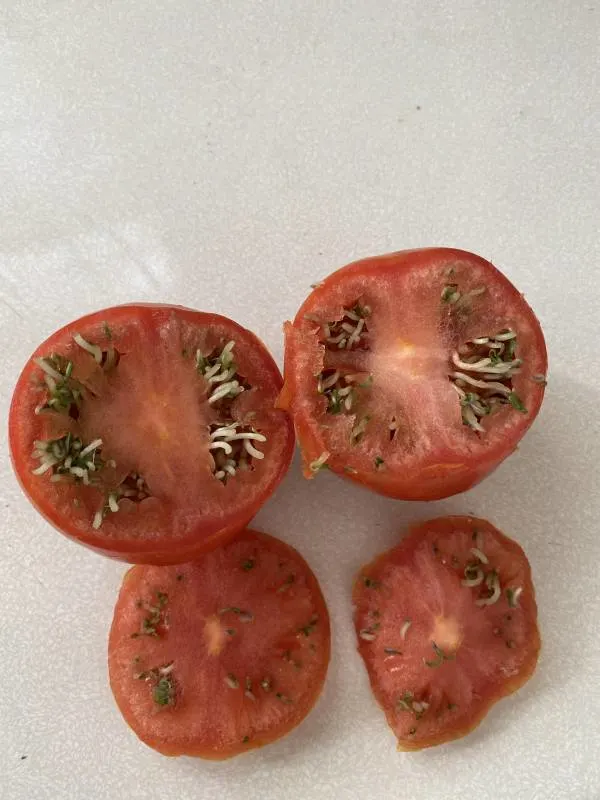
Germination is how a tiny seed develops into a new plant. It is the early growth phase in the life cycle of a tomato plant.
Germination begins when tomato seeds, under favorable conditions, absorb water, swell, and activate the dormant embryos within. As the embryos awaken, they grow and push through the seed coats, eventually forming young tomato seedlings.
Tomato seeds usually take 5 to 10 days.
Environmental Factors Affecting Tomato Seeds Germination
As this is one of the initial tomato growth stages, several environmental factors influence seed germination.
Temperature plays a critical role, as different plant species have specific temperature requirements for optimal germination.
Moisture is another vital factor, as seeds need adequate water to activate metabolic processes and soften the seed coat.
Light conditions also influence germination, with some seeds requiring light to trigger the germination process while others prefer darkness. You can produce fruit with natural light, or you can use artificial grow lights.
Now, let’s see what else happens during this initial growth in the life cycle of tomato plants.
Timeline and Key Developments During Germination
The timeline for seed germination varies depending on the plant species and environmental conditions.
Generally, germination begins within a few days to a couple of weeks after sowing.
As the seed absorbs water, the embryo swells, and the root, known as the radicle, emerges out of the seed’s surface. This is followed by the emergence of the shoot, or plumule, which develops into the stem and leaves of the young seedlings.
The primary leaves, known as cotyledons, may also emerge during this stage, providing initial vegetative development and nourishment to the plant until it can photosynthesize.
Throughout germination, the root system develops, anchoring the tomato seedlings and absorbing water and nutrients from the soil.
Stage 2: Seedling Stage
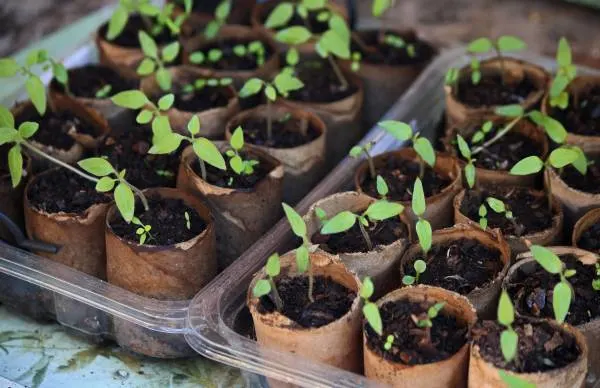
After successful germination, tomato seedlings start to emerge from the soil.
The tiny shoots push through the soil surface, and the first signs of green foliage become visible. This stage marks the beginning of the seedlings’ independent growth.
Development of Cotyledons and True Leaves
As the seedlings grow, they develop cotyledons, the first leaves to appear.
Cotyledons may look different from the true leaves that will follow. Cotyledons provide initial nourishment to the seedling.
Eventually, the true leaves emerge, resembling mature foliage, and the vegetative development continues.
The number of true leaves varies depending on the tomato variety.
Establishing a Healthy Root System
During the seedling stage, the primary root continues to develop and establishes a strong root system for the plant.
It is essential to provide adequate soil moisture and oxygen to the root systems. Water the seedlings carefully, ensuring adequate soil moisture. To encourage healthy root growth, remember to keep the soil moist and not waterlogged.
Stage 3: Vegetative Growth
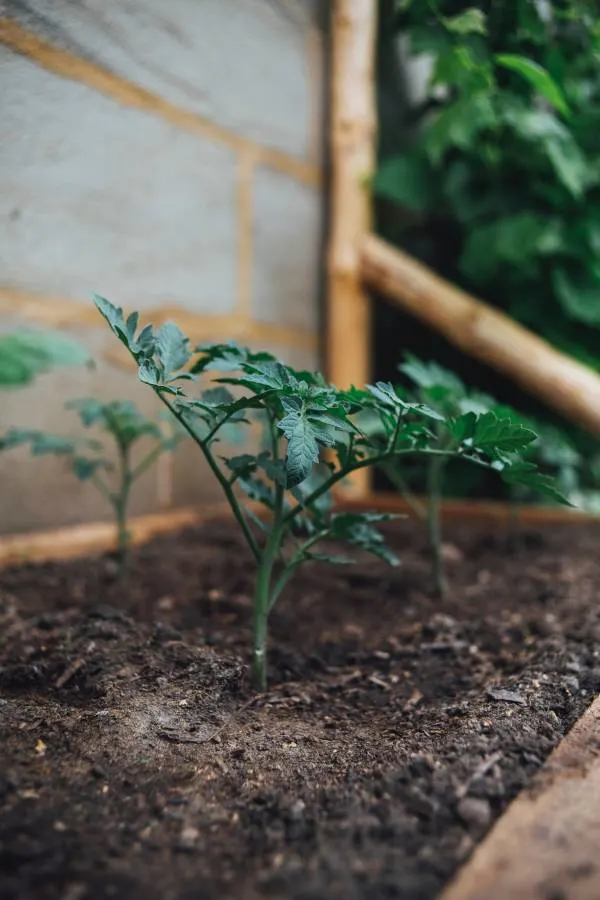
During vegetative growth, the tomato plant produces more true leaves, and the stem elongates.
The true leaves increase in size and resemble the mature size leaves of a tomato plant. The stem grows taller, allowing the plant to reach for sunlight and expand its size.
This stage extends for 20 to 25 days.
Pruning and Training Techniques to Promote Growth in Tomato Plants
Pruning and training techniques can be employed to encourage bushier growth and prevent legginess.
Pinching off the suckers, the growth points that emerge between the main stem and the leaf branches help redirect the plant’s energy towards the main stem and encourage a more compact and bushy shape.
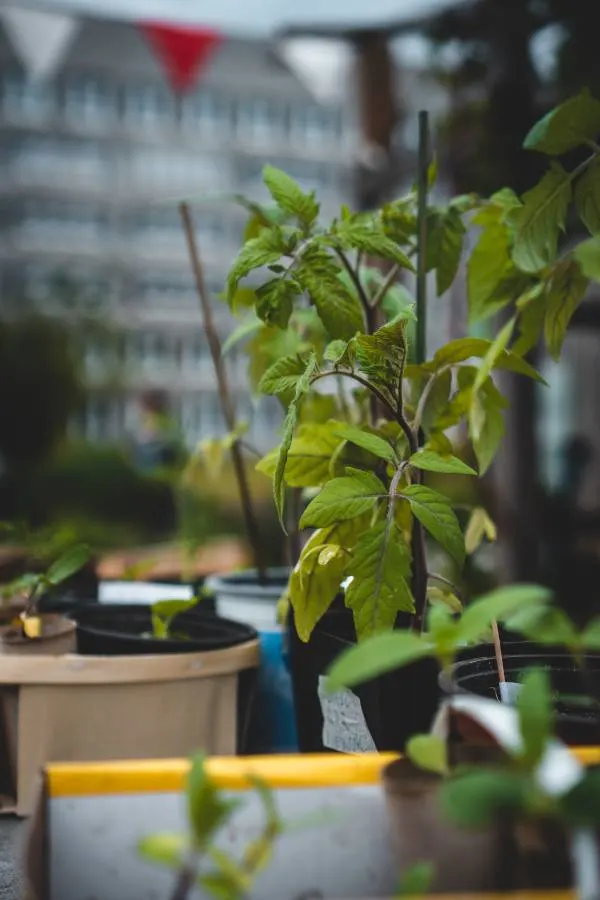
Management Of Environmental Conditions
Providing the right environmental conditions is crucial for optimal vegetative growth.
Tomato plants thrive in full sunlight, so ensure they receive at least 6-8 hours of direct sunlight per day.
Maintaining a consistent temperature between 70-80°F (21-27°C) during the day and slightly cooler at night promotes healthy growth. Adequate humidity levels, around 50-70%, help prevent issues such as dryness or excessive moisture.
Fertilization And Nutrient Needs During Vegetative Growth
Tomato plants have specific nutrient requirements during the vegetative growth stage.
Nitrogen is crucial for leaf and stem development, so choose a balanced fertilizer with a higher nitrogen content.
Follow the fertilizer package instructions for application rates and frequency. Regularly monitor the soil’s nutrient levels and adjust the fertilizer application.
Stage 4: Flowering Stage
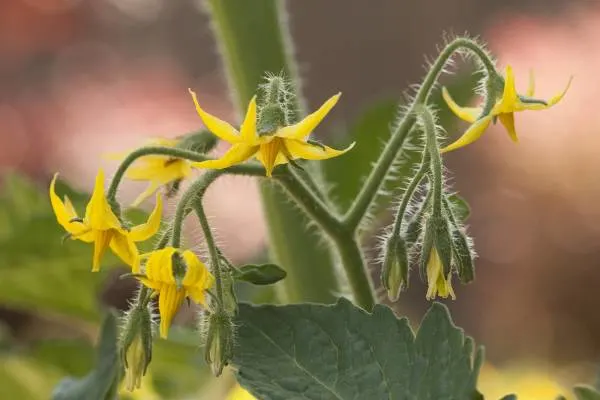
During the flowering stage, tomato plants begin to produce flower buds.
These buds develop into tomato flowers, transitioning the plant from vegetative to reproductive growth. The flowering process involves the maturation and opening of the flower buds, which are ready for pollination.
This stage usually lasts for 20 to 30 days.
Factors Affecting Flower Development
Environmental factors can influence tomato flowers and their development.
Sufficient light exposure, ideally 8-10 hours of direct sunlight, promotes healthy flower formation.
Temperature also plays a role, with the optimal range typically between 70-85°F (21-29°C) during the day and slightly cooler at night. If the daytime temperature increases, pollination fails, the fruit doesn’t form, and the flowers drop.
Adequate humidity levels, around 50-70%, help support proper flower development.
Care and Maintenance During Flowering
Care and maintenance during the flowering stage involve monitoring the plants for signs of stress or disease. Regularly inspect the plants for pests, such as aphids or whiteflies, and take appropriate measures to control them.
Proper watering and avoiding overwatering or underwatering help ensure the plants have adequate moisture. Additionally, providing support, such as stakes or cages, for the plants can help protect the developing flowers and fruits.
Stage 5: Fruit Development
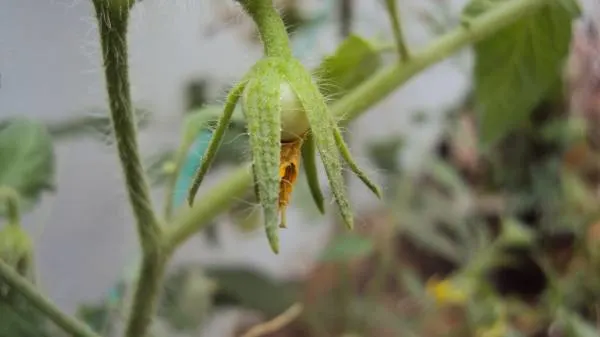
The tomato fruits grow and enlarge during fruit development, gradually reaching their mature size. This stage involves dividing and expanding the internal cells, leading to an increase in fruit size.
Changes in Fruit Color and Maturation Process
As the fruits develop, they change their color.
Depending on the tomato variety, the fruit color may transition from green to yellow, orange, pink, red, or other colors. This change in fruit pigment indicates mature fruiting, with the fruits becoming ripe and ready for harvest.
Common Issues in Fruit Formation
Fruit production can be affected by certain issues.
Cracking is a common problem where the fruit’s skin develops cracks, usually due to fluctuations in moisture levels. Blossom end rot is another issue characterized by a dark, sunken spot on the bottom of the fruit caused by a calcium deficiency or irregular watering.
Supporting and Protecting Fruit-Bearing Branches
You can use various techniques to support and protect fruit-bearing branches. Staking or caging the plants helps prevent the branches from bending or breaking under the weight of the fruits.
Proper pruning can also help improve air circulation around the fruits and reduce the risk of diseases. Providing shade or protective covers can also shield the fruits from excessive sunlight or extreme weather conditions.
Stage 6: Ripening and Harvest
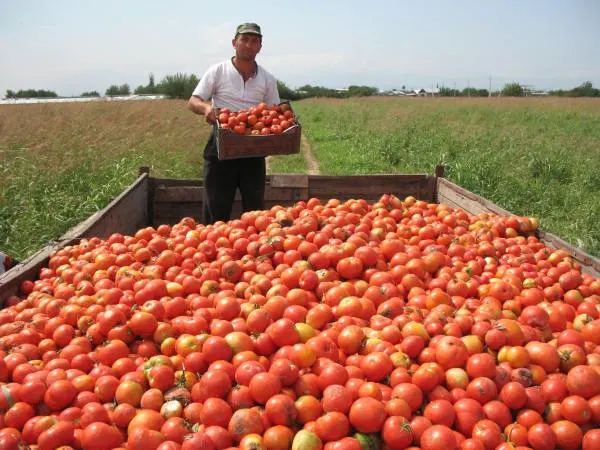
As the tomatoes approach maturity, signs of ripening become evident.
Look for changes in color, such as the fruits turning from green to their specific ripe color. The fruits should feel firm yet slightly give when gently squeezed. A sweet aroma and easy separation from the stem are also indicators of ripe tomatoes.
Proper Harvesting Techniques to Preserve Fruit Quality
To preserve the quality of the harvested fruits, it’s important to use proper harvesting techniques.
To harvest tomatoes, use sharp garden shears or scissors to cut the fruit from the plant, leaving a small portion of the stem attached.
Make sure you are handling the fruits carefully to prevent any bruising or damage.
Post-Harvest Storage and Ripening Methods
You can allow unripe tomatoes to ripen off the vine if you have unripe tomatoes. Place them in a single layer in a cool, well-ventilated area away from direct sunlight.
Check them regularly and remove any overripe or damaged ones to prevent spoilage. To speed up the ripening process, place unripe tomatoes with a ripe banana or apple in a paper bag, as these fruits release ethylene gas, which promotes ripening.
That’s all for today!
Let’s head toward the conclusion.
Conclusion!
Understanding the various growth stages of tomato plants is crucial for successful cultivation and a bountiful harvest.
As you embark on your tomato-growing journey, remember to follow the specific requirements of each growth stage during the tomato life cycle, such as providing adequate light, temperature, and humidity and implementing proper care and maintenance practices.
Regular monitoring, timely interventions, and attention to detail will contribute to the overall success of your tomato plants.
Happy tomato growing!
